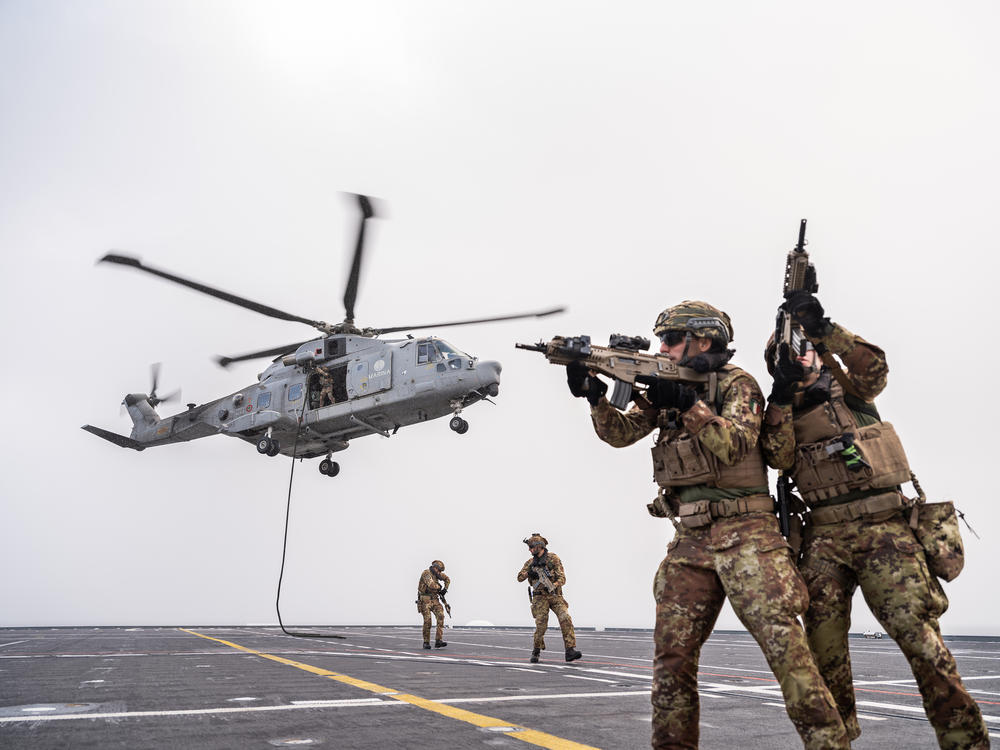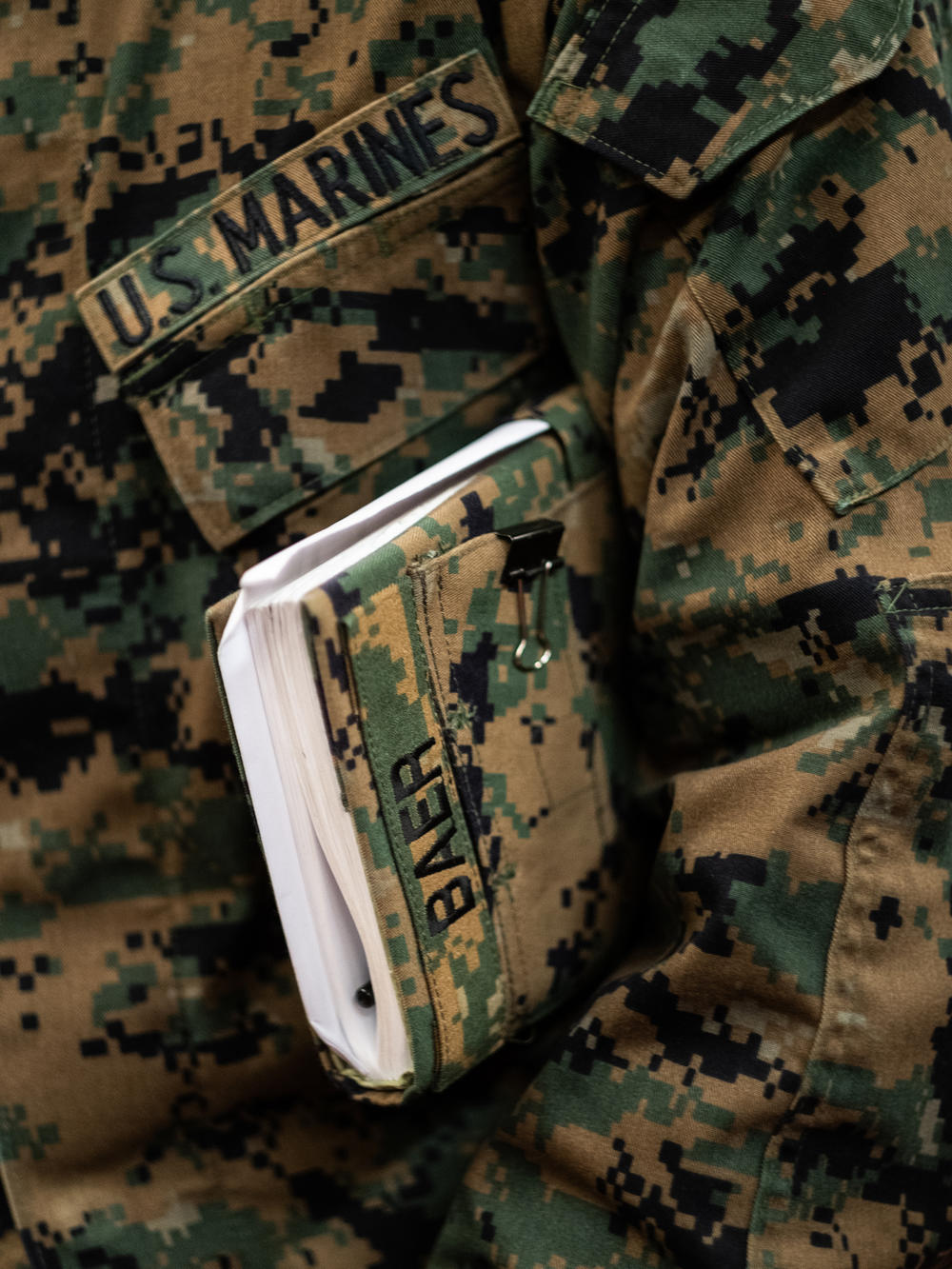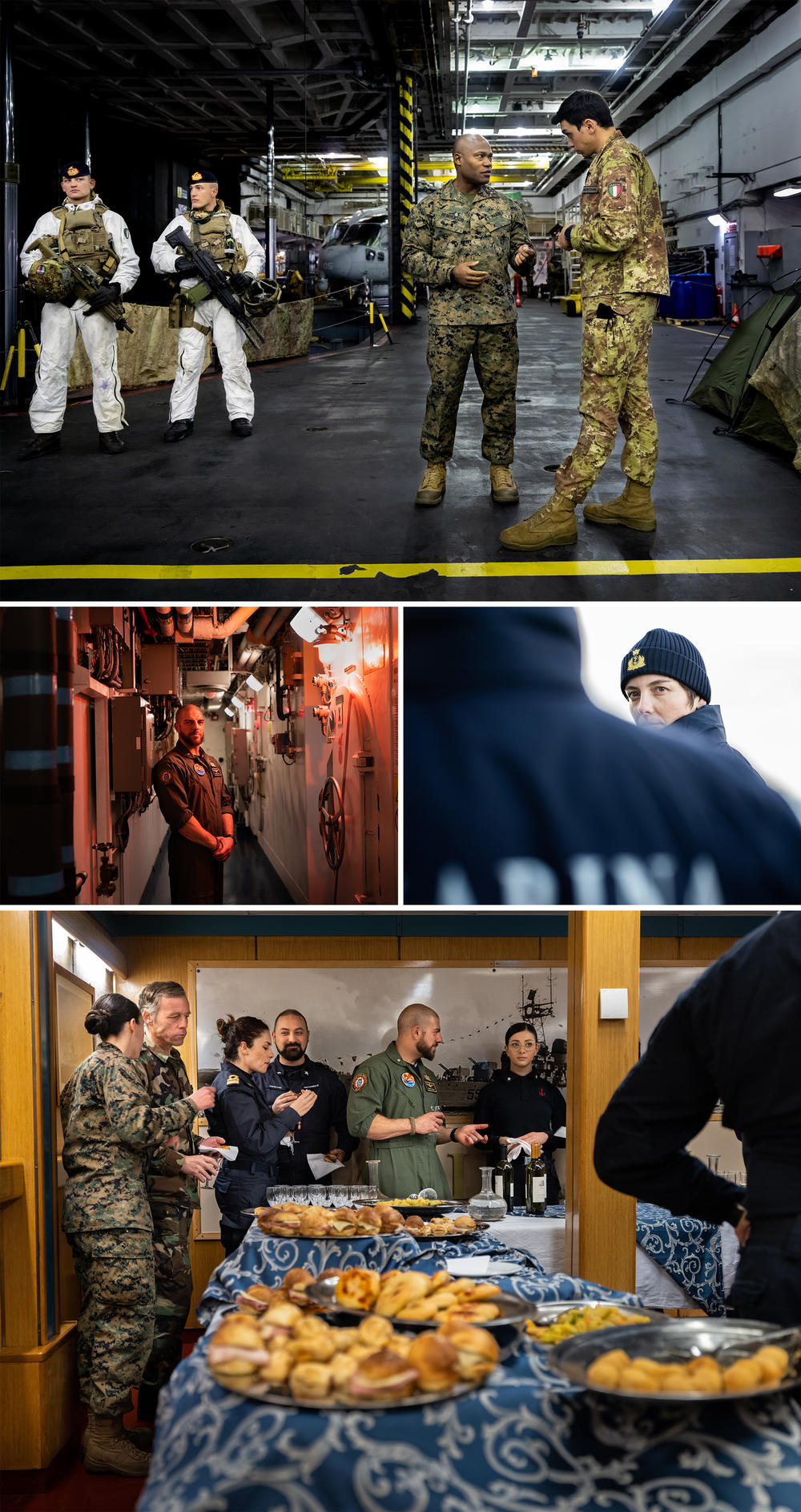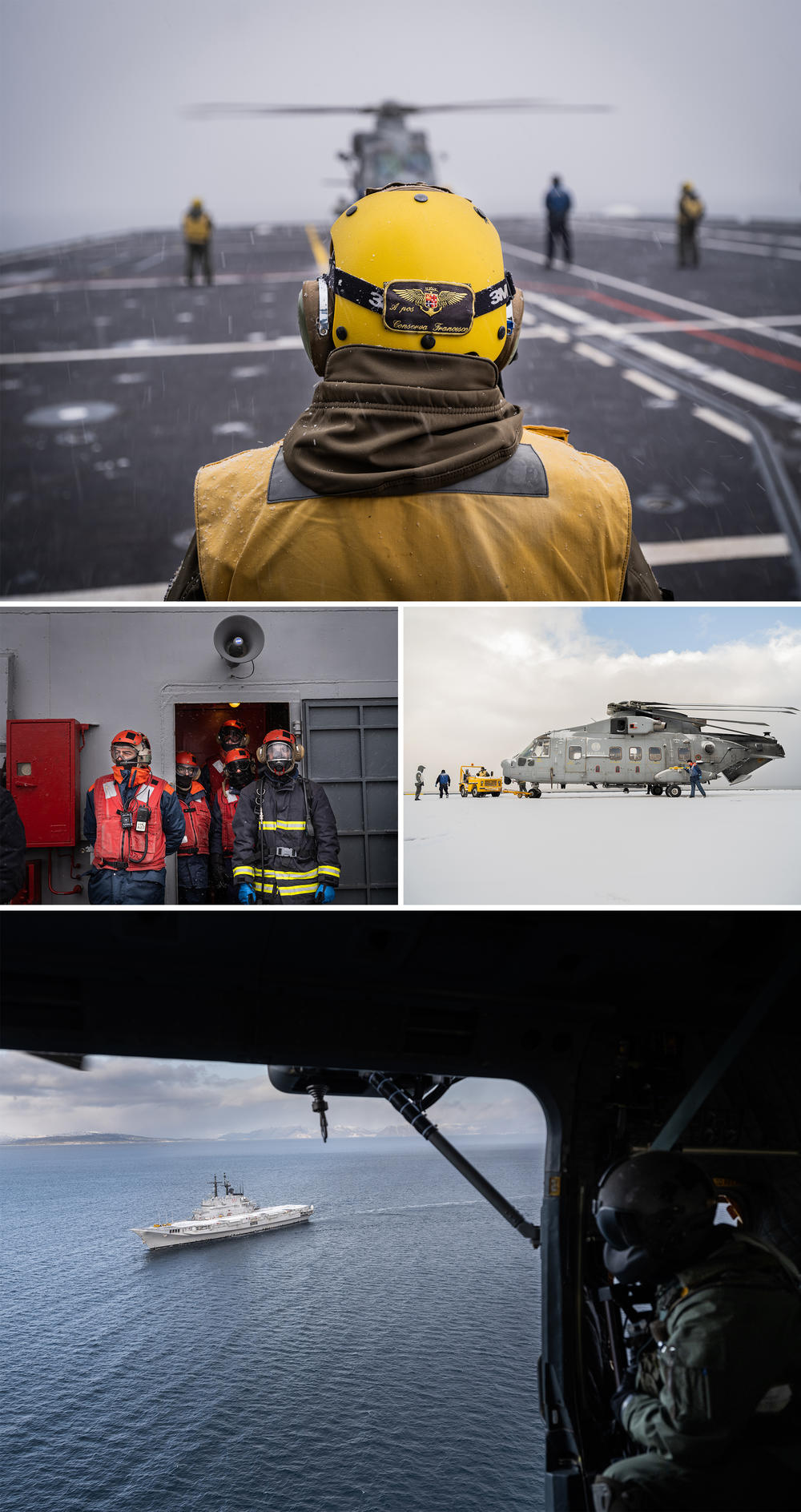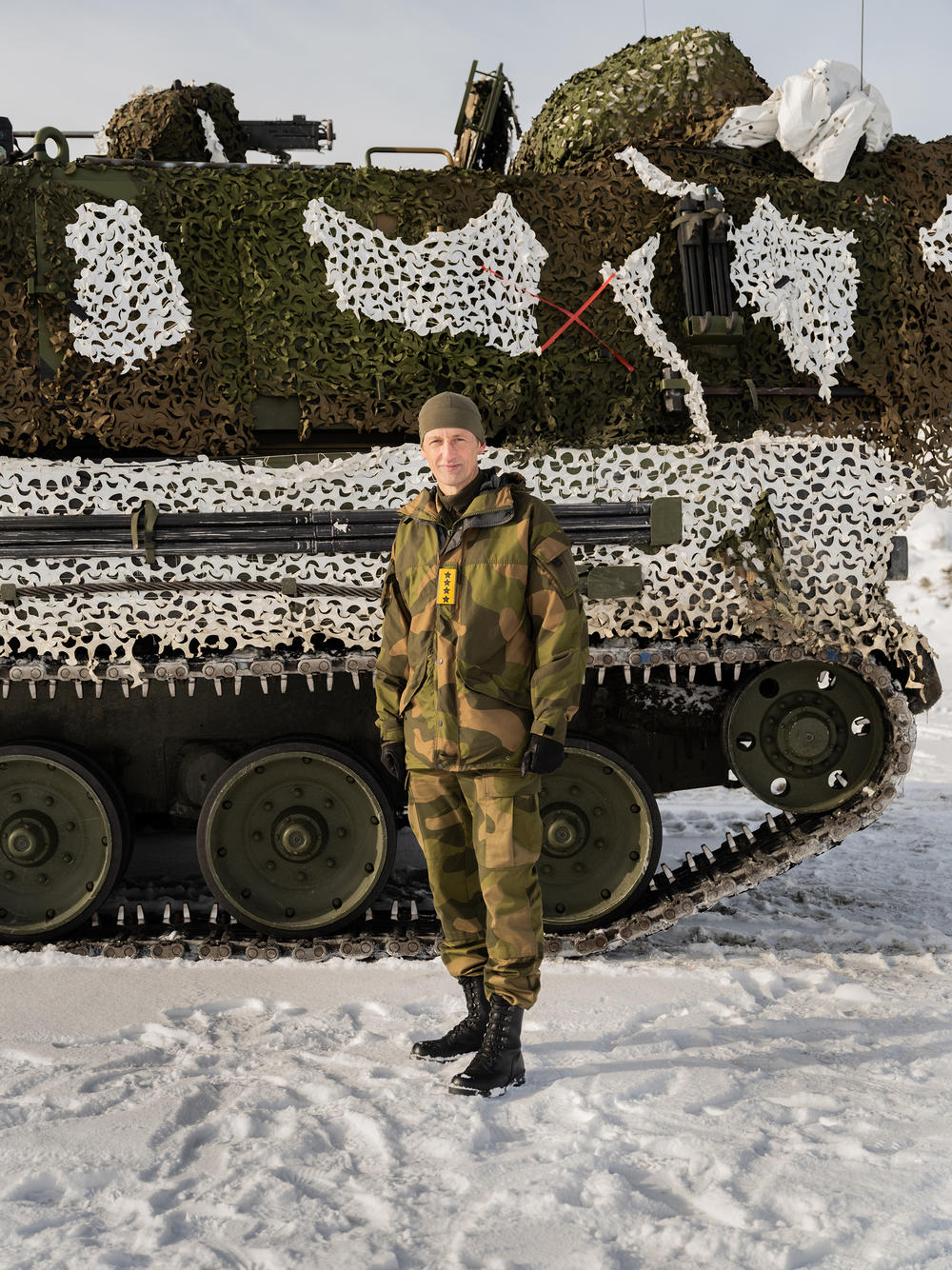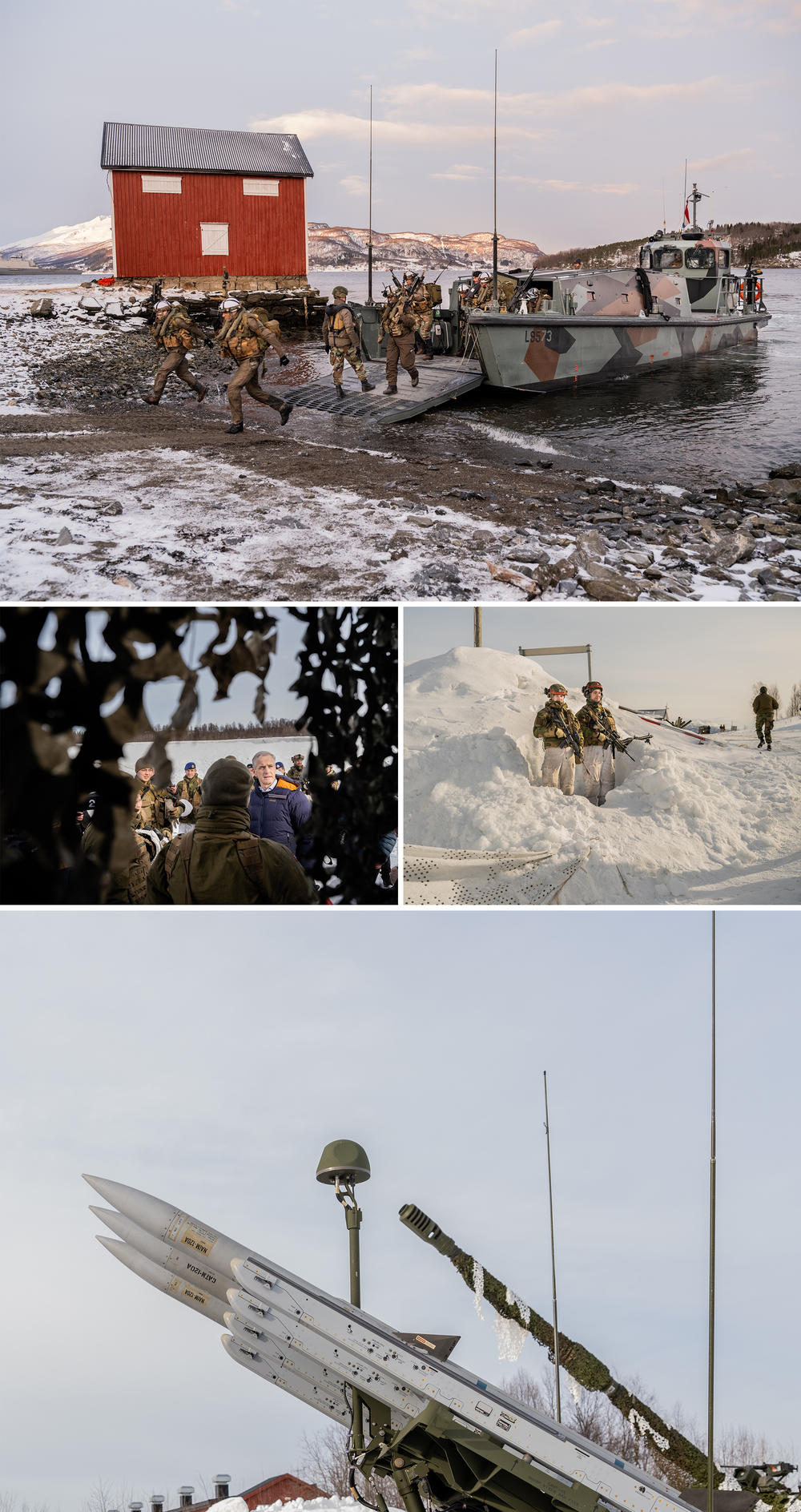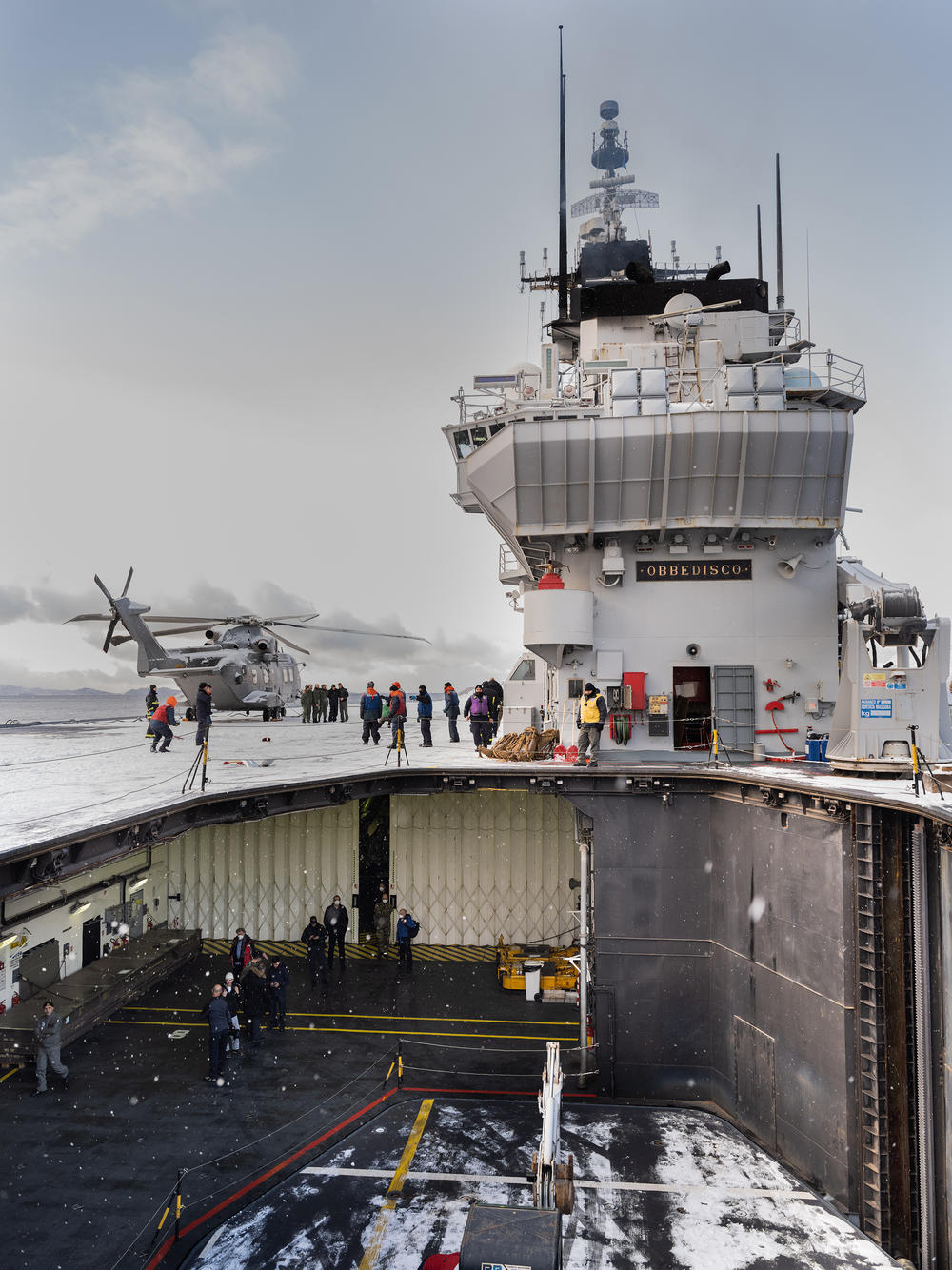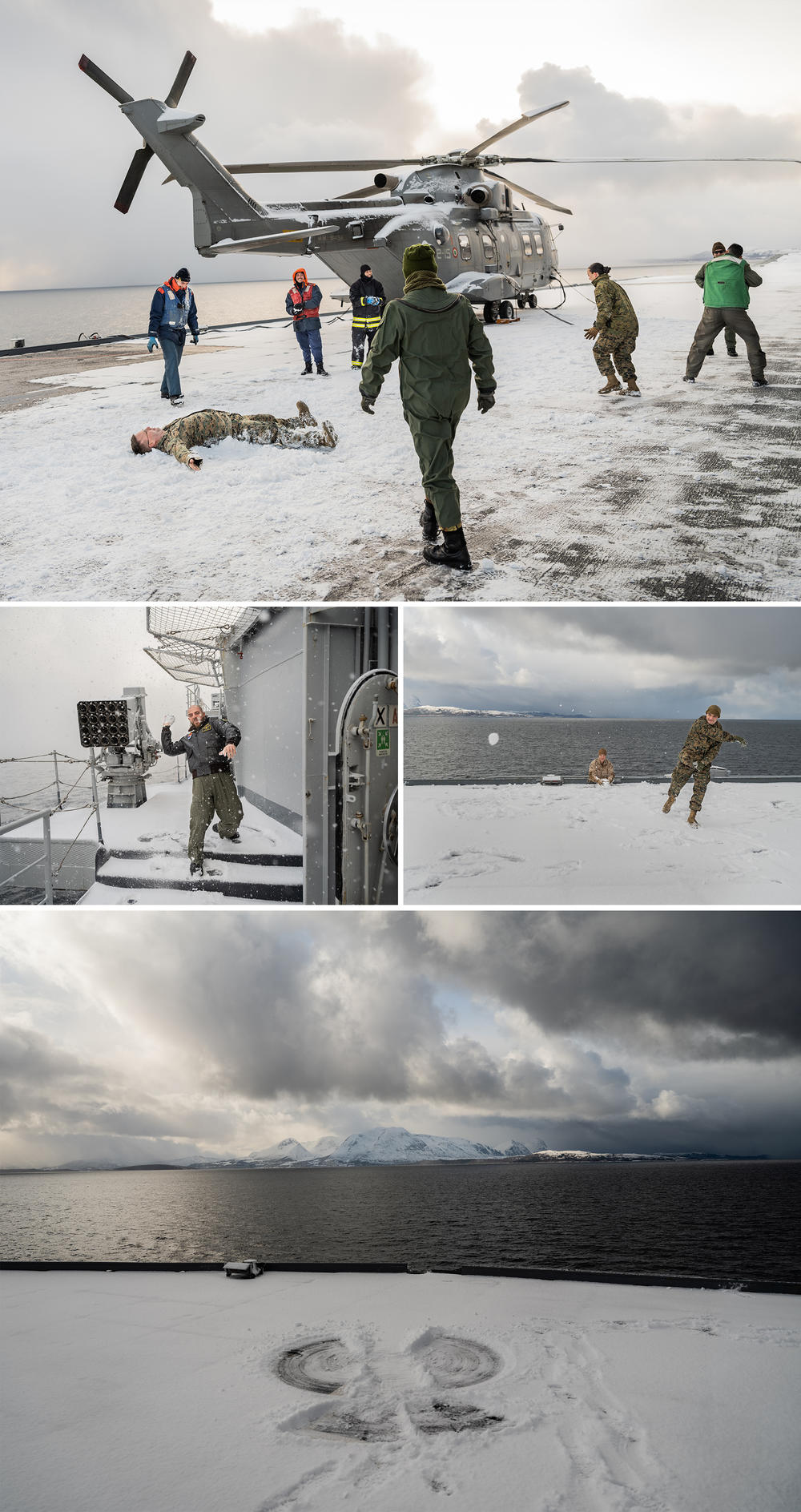Section Branding
Header Content
NATO troops conducted a routine war exercise in the Arctic. This year felt different
Primary Content
In March, a U.S. Marine Corps general aboard an Italian aircraft carrier floating in an Arctic fjord directed French troops to launch an amphibious assault from a Dutch ship to repel the occupation of Norway.
It was just a simulation — part of NATO's "Cold Response" exercise, which happens every two years. This year, however, with all eyes looking across Norway's border with Russia, the exercise felt a bit more real.
"Having a major power in Europe engaging in a broad land-air war, attacking your neighbor, influences everything," said Norwegian Prime Minister Jonas Gahr Støre, who was observing the war games. "Norway needs an alliance, allies, training, relevant defense to be safe. And that's what we practice here."
Troops from 27 countries participated in one of the largest NATO war games since the 1980s. Although it was scheduled two years ago, Russia's invasion of Ukraine gave this NATO exercise a Cold-War feel — and a renewed mission to deter Russia from thinking that any NATO country might be a soft target.
"We want all of the world, anyone who would take on a defensive Alliance like NATO to understand that it is prepared to defend all of its members. Unequivocally," said USMC Brigadier General Anthony Henderson, who led the exercise from aboard the Italian aircraft carrier Giuseppe Garibaldi, where hundreds of Italian sailors hosted US Marines.
In past years, Russian ships have closely shadowed the operation, even testing missiles nearby. Russia's north fleet, including nuclear submarines, is stationed just over the border from Norway. This year that fleet is occupied, bombarding Ukraine from the Black sea. But in this region, the "High North" Russia is still seen as ahead of its rivals.
"The US let some of that capability atrophy after the end of the cold war. Now we have, in the last few years, really paid more attention to the need to restore our icebreaker fleet, and also to be able to equip our forces to operate in colder weather and more dangerous conditions," said Sherri Goodman, former Deputy Undersecretary of Defense.
Goodman says Russia still has a huge advantage in the Arctic though - about 50 ice-breaking vessels, compared to America's two coast guard ships. And she's worried that melting sea ice, new shipping routes, and a race for new mining and drilling in the Arctic present opportunities for crisis with Russia. Especially since Vladimir Putin is now a pariah.
"We have entered an era in the Arctic of cold peace at best, where Russia is less tethered to the Arctic institutions that have provided stability for the last quarter century. While it doesn't mean we are heading into an armed conflict, we are heading into an area where deterrence and defense will play a larger role," said Goodman.
At the same time that NATO practiced in Arctic Norway, the US ran a similar exercise with 8,000 troops in Alaska along the Bering Sea, where Russia has stepped up military activity in recent years.
Working in the Arctic is inherently complicated – those conditions may have contributed to the deaths of four US Marines in Norway when their Osprey tiltrotor crashed during the exercise on Friday, March 18th. Search and rescue was hampered by a sudden blizzard, something that happened almost daily during the three weeks of war games.
Equally complicated is directing close air support to 27 different national forces, spanning many languages and military cultures.
"It's a very complex exercise, and that's part of what we were trying to get after was, 'how did we learn to work together well?' You can't just shoot into somebody else's space because you might hurt somebody over there. You have to make sure you do that proper coordination," said US Marine Major Caleb Brown, who was directing - simulated - artillery from aboard the Giuseppe Garibaldi.
Across the NATO force, the only real combat experience comes from a very different kind of war, in Iraq or Afghanistan or possibly Syria. So "Cold Response" was as much about learning to stay warm, de-ice air craft, and deal with extreme weather.
As a sudden white-out snowstorm grounded all the air craft on the deck of the Italian Air Craft carrier, several crews were left waiting for an all clear. But part of the exercise is building camaraderie among NATO troops, so the Italians and the Americans started a snowball fight on the flight line.
Copyright 2022 NPR. To see more, visit https://www.npr.org.
